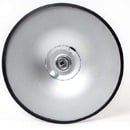
Fixing a squeaky bar stool is a somewhat regularly reoccurring job since it’s common for stools to start to squeak as they get older. A squeaking bar chair can make having breakfast at your kitchen counter a pain and the longer you leave it, the more noise it’s likely to make.
Not to worry, however, since we have a quick step by step guide to solve the problem. After following this guide, you’ll know exactly how to stop your stools from squeaking and how to prevent them from doing so in future.

Before starting
Before continuing on to the guide, it’s important to identify where the sound is coming from. The most common cause of squeaking is friction on moving parts, and these parts are the most common culprits.
What these parts are will depend on the type of the stool and the sort of joints used in its frame. The easiest way to find the source of the noise is to listen carefully to where the sound is coming from. Doing this with two people can make this task easier since it allows one to listen while the other moves the seat.
“Prefer to just replace you bar stools? We’ve got an extensive range of bar stools for you to choose from, ensuring you find the perfect model for your kitchen or dining area!”
What you’ll need
- WD40
- Lubricant/oil
- Allen key/screwdriver
Gas Lift Bar Stools with squeaky bases
Gas lift stools are made up of a metal frame with a central column. Now and again these may start to squeak when they become dry. With this type of bar stool, it’s generally easy to pinpoint the source.
- First, check that the screws and/or bolts have been tightened. You can do this by turning the stool upside down and using an Allen key (or another tool, depending on the type required) to check if all screws are tight enough.
- On bar stools with domed bases, the source of the noise can be located where the central column meets the base. To solve the problem, simply lift the plastic collar and apply a small amount of WD40 around the circumference of the joint of the column into the base, letting it pass through. You can also use another lubricant or oil instead of WD40, but make sure it’s suitable for use on furniture/inside the home.
- Once the lubricant, oil or WD40 has been applied, make sure you wipe away any excess to prevent staining and ruining your bar stools.

Other adjustable bar stools
There are many different kinds of adjustable bar stools that can start to squeak. Luckily, the process for identifying the culprit and stopping the excess noise is much the same.
- There are several other sections on a central column where squeaking could potentially occur. The first of these is the plate where the seat joins the metal column below.
Even the frame of the seat is concealed by upholstery, the frame is sometimes made of wood, and when dried out there is a small chance that it could start to squeak.
- After you’ve identified what part of the bar chair is squeaking, you can follow the same process mentioned above. Add a small amount of WD40, oil or another lubricant to the area and wipe away any excess lubrication afterwards.
Fixed height stools
It’s very rare for fixed-height bar stools to squeak or make noise. That being said, it can happen. Below are the steps you should take to fix it.
- Loose screws and bolts are the most common reason that fixed-height stools make noise. If this is the case, simply tightening the screws should stop the squeaking.
- On wooden stools, squeaking is generally caused by the material naturally expanding and contracting due to the temperature changes. This expanding and contracting can result in joints or screws coming loose.
The easiest way to correct this is by injecting glue into the joints. Whilst wood glue is recommended, other household adhesives like Araldite or superglue can also be used. Look for one with a syringe and metal needle that can be pushed right into the joint space, ensuring the glue reaches the right places. Make sure to wipe away any excess glue after application.
Conclusion
Like most things, it’s normal to expect a small amount of wear and tear over time. Squeaking and cracking sounds are generally nothing to worry about, and you should be able to fix any noisy bar stools by following the steps above.
Hopefully, these quick and easy solutions will help nip those squeaky bar stools in the bud. If you have any unanswered questions after reading this post, please contact our support team.
 Chat with us on WhatsApp
Chat with us on WhatsApp


Comments